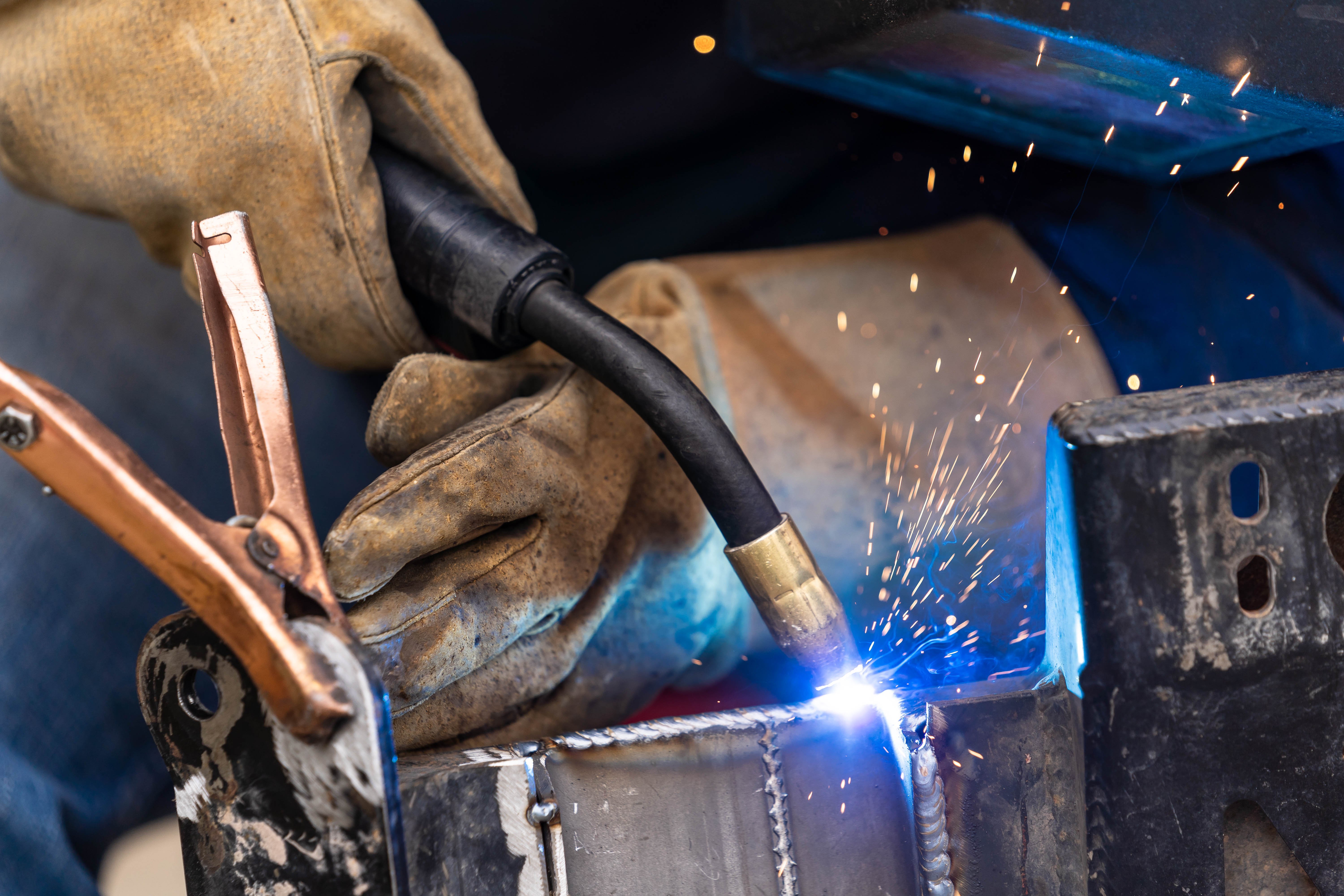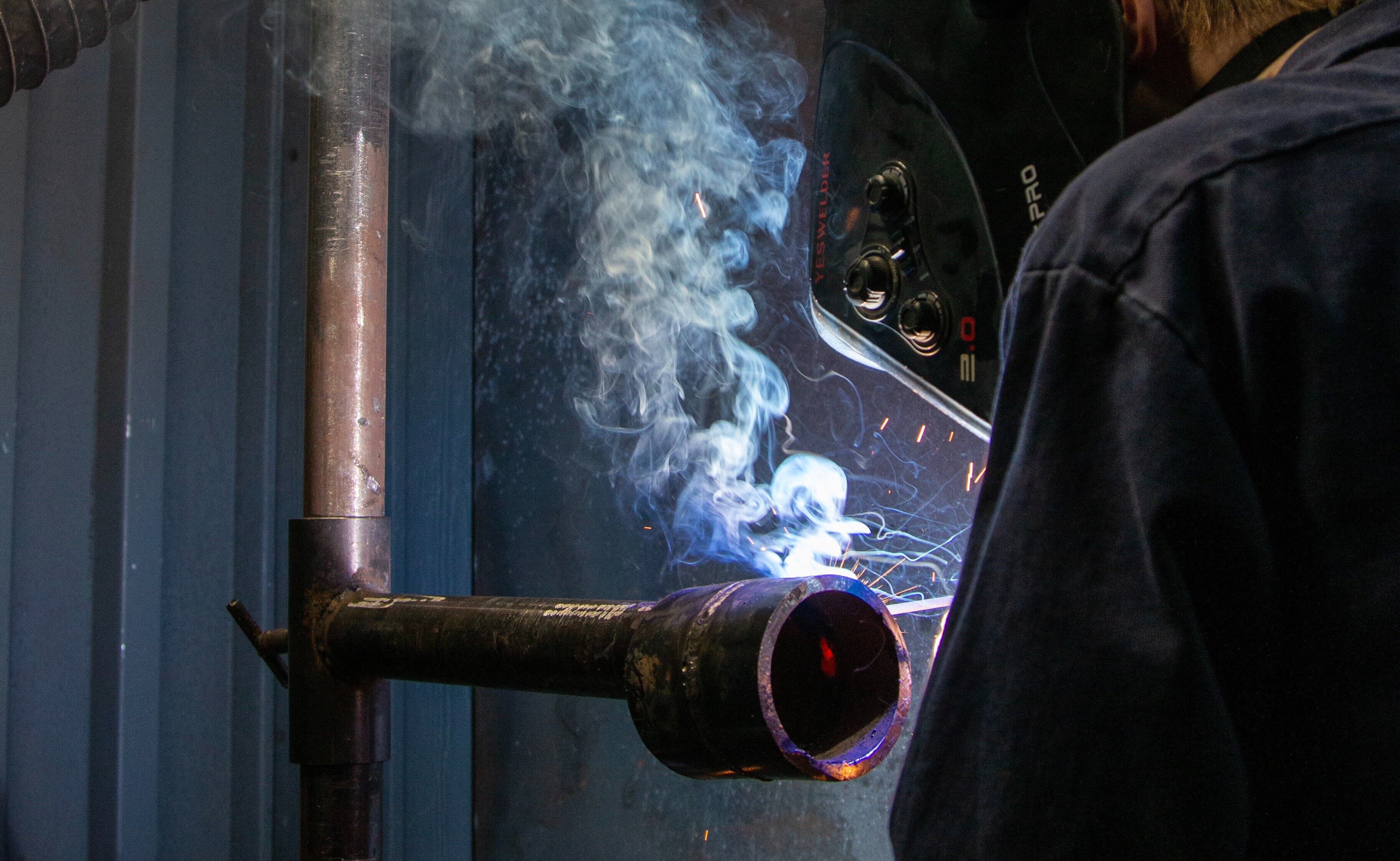Ways to minimize distortion in Montana Mobile Welding and Repair Welding projects
Typical Welding Repair Service Issues and Exactly How to Address Them Properly
Welding repairs typically run into an array of problems that can threaten the stability of the end product. Typical issues include poor infiltration, porosity, and misalignment, to name a few. Each problem offers one-of-a-kind obstacles that call for particular approaches for resolution. Comprehending these concerns is vital for welders intending to improve their results and abilities. This conversation will certainly check out these typical welding repair problems and efficient approaches to resolve them.
Poor Infiltration
Insufficient penetration occurs when the weld metal stops working to fully fuse with the base product, resulting in weak joints and possible architectural failings. This issue typically originates from inadequate warm input, inaccurate electrode angle, or incorrect welding speed. Welders might come across insufficient infiltration because of a miscalculation of the required specifications for a details product thickness or kind. In addition, contamination on the base product's surface area can impede efficient bonding, worsening the trouble. To address poor infiltration, welders ought to ensure proper settings on their equipment and maintain a clean work surface. Routine examination of welds is advised to identify any kind of shortages early, permitting prompt adjustments and the avoidance of compromised architectural honesty in welded assemblies.
Porosity
Porosity is a typical issue in bonded joints that shows up as small gas bubbles trapped within the weld metal. This problem can endanger the integrity of the weld, leading to reduced stamina and potential failing under stress. Montana Mobile Welding and Repair. Porosity generally arises from contamination, dampness, or incorrect welding techniques, which permit gases to get away into the liquified weld pool. To address porosity, welders must assure correct surface area preparation, maintain a tidy workplace, and use appropriate welding criteria. Additionally, choosing the best filler product and shielding gas can alleviate gas entrapment. Regular evaluation and testing of welds can assist identify porosity early, guaranteeing prompt restorative actions are taken, thereby preserving the top quality and integrity of the bonded framework
Imbalance
Imbalance in welding can occur from numerous variables, including inappropriate arrangement and thermal development. Comprehending the origin is vital for effective resolution. A number of correction methods are readily available to straighten components and ensure structural honesty.
Sources of Misalignment
Welding imbalance frequently comes from a range of underlying concerns that can endanger structural integrity. One primary reason is incorrect fit-up of components prior to welding, which can result in spaces and unequal surface areas. Variants in thermal development during the welding process can likewise cause distortion, particularly if the materials being joined have different coefficients of growth. Furthermore, insufficient clamping and fixturing might fail to hold components safely in area, resulting in motion during welding. Poorly conserved tools, including welding devices and tools, might introduce incongruities in the weld grain, additional adding to misalignment. Operator mistake, stemming from inadequate training or experience, can additionally play a considerable function in developing misaligned welds.

Modification Strategies Offered
Addressing imbalance effectively calls for a mix of rehabilitative methods tailored to the certain problems available. One typical method is the usage of jigs or components to hold components in the appropriate setting during welding, making certain constant positioning. Furthermore, preheating the products can help minimize distortion and boost fit-up. For significant misalignment, mechanical realignment techniques, such as making use of hydraulic jacks or clamps, can be utilized to correct the position prior to welding. Post-weld warm therapy might also be essential to ease stresses triggered by misalignment. Cautious inspection and modification during the setup stage can protect against misalignment problems from ending up being considerable problems, advertising a smoother welding process and enhancing overall architectural honesty.
Distortion
Distortion is a typical difficulty in welding that can emerge from various factors, consisting of unequal heating & cooling. Recognizing the causes of distortion is essential for carrying out reliable avoidance techniques. Addressing this issue not only enhances structural honesty yet also improves the general top quality of the weld.
Causes of Distortion
When subjected to the extreme warm of welding, materials commonly go through adjustments that can result in distortion. This phenomenon mainly emerges from thermal development and contraction during the welding process. As the weld area warms up, the product expands; upon cooling, it contracts, which can create internal stresses. On top of that, unequal home heating across a work surface can exacerbate these stress and anxieties, causing warping or flexing. The sort of product also plays a substantial duty; steels with varying thermal conductivity and coefficients of expansion may react differently, leading to unpredictable distortions. Inadequate joint design and poor fixturing can contribute to imbalance during welding, enhancing the possibility of distortion. Comprehending these causes is necessary for effective welding repair and avoidance strategies.
Avoidance Techniques
Effective prevention strategies for distortion throughout welding concentrate on managing heat input and making sure appropriate joint design. Keeping a constant warmth input assists to minimize thermal development and tightening, which can result in distortion. Utilizing methods such as preheating the workpiece can likewise minimize the temperature level gradient, promoting consistent home heating. In addition, choosing appropriate joint styles, such as T-joints or lap joints, can enhance security and reduce stress concentrations. Applying proper fixturing to safeguard the workpieces in position further aids in preserving positioning during the welding procedure. Staggered welding sequences can disperse heat extra evenly, preventing localized distortion. By using these methods, welders can significantly lower the likelihood of distortion and improve the total quality of their welds.
Cracking
Fracturing is a common problem come across in welding repairs, usually resulting from various variables such as incorrect air conditioning rates, product choice, or inadequate joint preparation. The incident of cracks can significantly endanger the honesty of the weld, resulting in potential failings throughout operation. To resolve this issue, welders have to first examine the source, making sure that products are portable welders for sale suitable and suitably chosen for the specific application. Furthermore, managing the cooling rate during the welding process is important; fast cooling can induce stress and bring about breaking. Proper joint style and prep work additionally add to reducing the threat. Carrying out these methods can boost weld top quality and durability, inevitably decreasing the likelihood of cracking in completed weldments.

Insufficient Blend
A significant concern in welding repairs is insufficient blend, which takes place when the weld metal does not effectively bond with the base product or previous weld passes - Welding. This defect can result in weak points in the joint, potentially compromising the stability of the welded framework. Variables adding to incomplete combination include inadequate warm input, improper welding method, and contamination of the surfaces being signed up with. To address this concern efficiently, welders need to assure appropriate pre-weld cleaning and surface prep work, in addition to readjust their welding specifications to accomplish sufficient infiltration and blend. Normal evaluation throughout the welding process can also assist identify insufficient blend early, allowing for prompt rehabilitative actions to enhance the total high quality of the weld
Overheating
While welding repairs can boost structural stability, overheating presents a substantial obstacle that can bring about product deterioration. Too much heat during welding can modify the mechanical buildings of metals, resulting in reduced stamina, raised brittleness, and bending. This phenomenon is especially critical in high-stress applications where architectural dependability is paramount. Recognizing overheating can entail visual inspections for staining or distortion, in addition to keeping an eye on temperature level during the welding procedure. To mitigate the threats related to getting too hot, welders ought to use proper strategies, such as controlling warm input, adjusting travel rate, and utilizing suitable filler products. Additionally, applying pre- and post-weld warmth treatments can help recover material properties and enhance the general top quality of the repair service, ensuring lasting performance and safety.
Regularly Asked Inquiries
What Are the Usual Indications of a Welding Flaw?

Just How Can I Examine My Welds for High quality?
To test welds for high quality, one can utilize visual evaluations, ultrasonic screening, and radiographic methods. Each strategy ensures structural honesty, determines flaws, and validates adherence to specified criteria, eventually improving the dependability of the welded joints.
What Safety and security Preventative Measures Should I Take While Welding?
When welding, one ought to prioritize safety and security by using suitable personal safety tools, making sure correct ventilation, protecting combustible products away, preserving a clean workspace, and recognizing surroundings to stop injuries and crashes.
Can I Fix a Weld Without Renovating the Entire Joint?
Fixing a weld without remodeling the entire joint is feasible, depending upon the damages (Welding). Methods such as grinding, adding filler product, or using a welding procedure can successfully attend to certain imperfections while maintaining the surrounding framework
What Tools Are Necessary for Reliable Welding Repairs?
Important devices for efficient welding repair work include a welding maker, cable brush, mill, safety equipment, clamps, and filler products. Each device plays a vital duty in making certain high quality and security during the fixing procedure. Porosity normally emerges from contamination, dampness, or inappropriate welding methods, which enable gases to run away right into the molten weld pool. Badly maintained tools, consisting of welding makers and tools, may introduce disparities in the weld grain, additional contributing to imbalance. When subjected to the intense warmth of welding, materials typically undergo modifications that can lead to distortion. Breaking is an usual concern experienced in welding repairs, commonly resulting from numerous variables such as incorrect air conditioning rates, material choice, or insufficient joint prep work. A considerable issue in welding repair work is incomplete combination, which occurs when the weld metal does not sufficiently bond with the base product or previous weld passes.